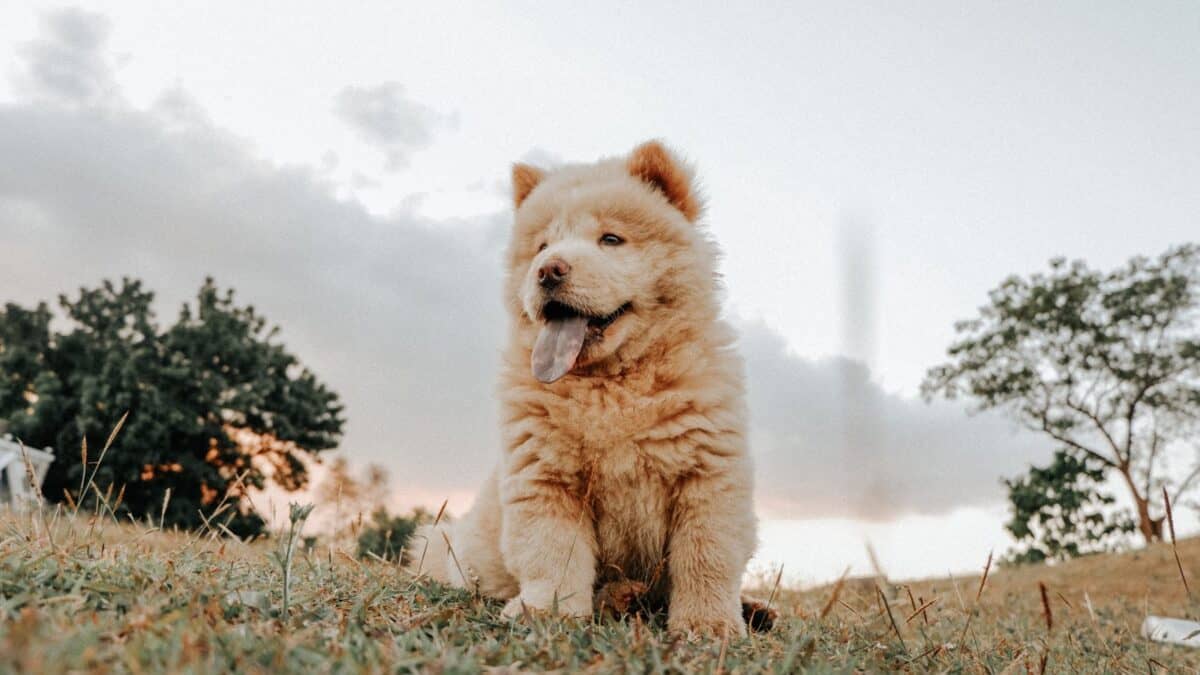When it comes to expanding your family with a four-legged friend, not all dog breeds mesh well with the energetic, unpredictable nature of children. While many dogs thrive in family environments, certain breeds have characteristics that make them less suitable companions for households with young kids. Whether due to fragile physiques that can be injured during rough play, temperaments that require experienced handling, or inherent traits that don’t align with family dynamics, some canine companions simply don’t make the best playmates for children. Understanding these breed-specific concerns can help families make informed decisions when selecting a pet, ensuring both the dog’s wellbeing and the safety of the children. Let’s explore nine dog breeds that, despite their many wonderful qualities, may present challenges in homes with kids.
Understanding the Mismatch Between Certain Dogs and Children

Before diving into specific breeds, it’s important to understand why some dogs struggle in households with children. Children, especially younger ones, often haven’t developed the awareness needed to interact appropriately with dogs. They may pull tails, make sudden loud noises, or attempt to ride or climb on dogs – behaviors that can frighten, hurt, or provoke even the most patient canines. Some dogs possess physical fragility that makes rough handling dangerous for their health, while others have strong protective or territorial instincts that can manifest as aggression when feeling threatened.
It’s worth noting that individual personality variations exist within every breed, and proper training, socialization, and supervision can mitigate many concerns. However, recognizing breed tendencies allows families to make informed choices that consider both their children’s safety and the dog’s quality of life. Remember that responsible pet ownership includes matching a dog’s needs and natural inclinations with the appropriate living environment.
Chihuahua Tiny Bodies with Big Personalities
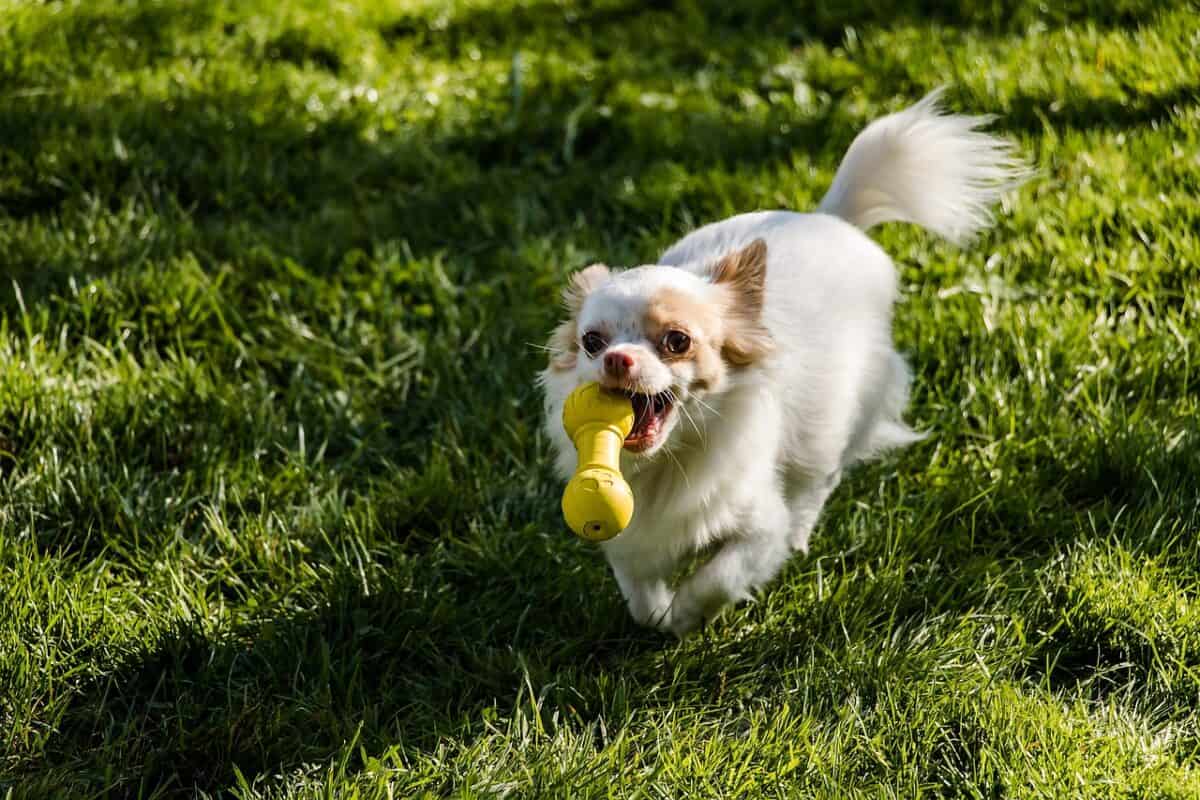
Chihuahuas may be the world’s smallest dog breed, but their personalities are anything but diminutive. Weighing between 2-6 pounds, these tiny canines have delicate frames that can be easily injured during enthusiastic play with children. Their small size makes them vulnerable to being stepped on, dropped, or squeezed too tightly – accidents that can result in serious injuries including broken bones. Additionally, Chihuahuas typically form strong bonds with one person and can be notoriously suspicious of others, including children who aren’t part of their immediate family circle.
Their tendency toward nervousness can manifest as snappiness when they feel threatened, and many Chihuahuas don’t hesitate to use their teeth when they feel cornered or handled roughly. This breed’s combination of physical fragility and protective nature creates a challenging dynamic around unpredictable young children. While adult Chihuahuas can learn to tolerate respectful older children, families with toddlers or rambunctious youngsters might want to consider more robust, patient breeds.
Chinese Crested Delicate and Demanding
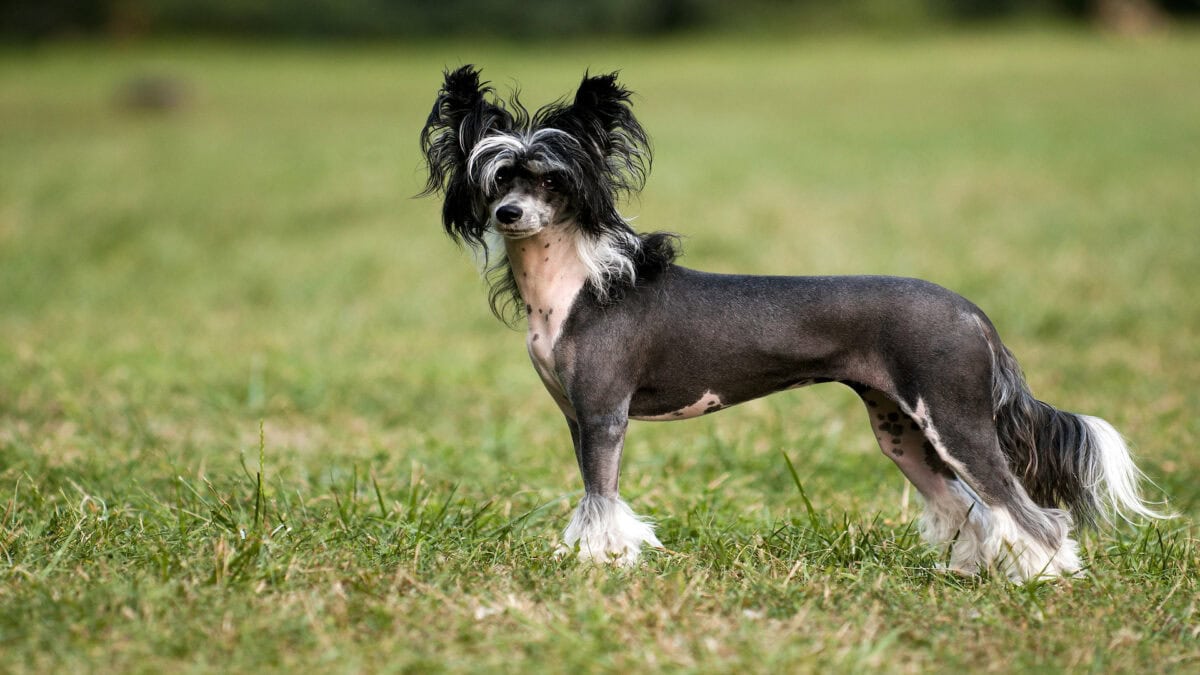
The Chinese Crested, with its unique appearance and affectionate temperament, requires special handling that makes it poorly suited for homes with young children. These dogs come in two varieties – the hairless (with skin exposed except for tufts on the head, feet, and tail) and the powderpuff (with a full coat) – but both share a delicate bone structure. Their exposed skin or fine coat offers minimal protection against rough handling, making them susceptible to scratches, bruises, and more serious injuries during play with children.
Beyond their physical vulnerability, Chinese Cresteds demand gentle, consistent care and tend to be sensitive to harsh treatment or voices. They thrive on routine and can become anxious when subjected to the unpredictable nature of a household with children. Their skin requires regular maintenance including sunscreen application for the hairless variety – care requirements that can be difficult to maintain in busy family households. While they form loving bonds with their families, their physical and temperamental needs generally make them better companions for adults or households with older, calm children who understand proper pet handling.
Akita Powerful Guardians with Strong Instincts

Akitas represent the opposite end of the spectrum from fragile toy breeds, but their power and protective instincts create different concerns around children. Originally bred in Japan for hunting and guarding, these imposing dogs typically weigh between 70-130 pounds and possess formidable strength. Akitas are renowned for their loyalty and devotion to their families, but they also maintain strong protective instincts that can be problematic in households with children, especially when those children have friends visiting. Akitas often view their family as their pack and may consider themselves responsible for protecting “their” children from perceived threats – including unfamiliar children.
Their natural reserve with strangers, combined with a low tolerance for rough handling or perceived disrespect, makes supervision around children absolutely essential. Akitas aren’t typically aggressive without reason, but they can respond decisively if they feel threatened or if their boundaries are repeatedly crossed. Their size means even accidental bumps during play could knock small children over. While well-socialized Akitas can adapt to respectful older children within their own family, their strong-willed nature and protective tendencies generally make them better suited for experienced dog owners without young children or frequent young visitors.
Chow Chow Independent and Territorial

The Chow Chow’s distinctive lion-like appearance and blue-black tongue make them instantly recognizable, but their aloof, independent temperament often clashes with family dynamics involving children. Historically serving as guard dogs in China, modern Chows retain strong territorial instincts and a natural reserve that can manifest as aloofness or even aggression when they feel their space is being invaded. Unlike breeds that actively seek affection and play, Chows typically prefer being near their chosen people without excessive handling – a preference that curious, affectionate children may struggle to respect.
Physical considerations also factor into their compatibility with children. Their thick double coat can cause overheating during rough play, and their somewhat limited peripheral vision (due to their facial structure) means they may be startled by children approaching from the sides. Chows have earned a reputation for having “cat-like” personalities – independent, dignified, and particular about how and when they’re touched. While some well-socialized Chows can adapt to calm, respectful children, their natural temperament typically makes them better suited for quiet adult households or families with older children who understand and respect animal boundaries.
Italian Greyhound Elegant but Extremely Fragile

Italian Greyhounds embody grace and elegance with their slender bodies and fine-boned legs, but this delicate structure makes them particularly vulnerable in homes with children. Weighing just 7-14 pounds, these miniature sighthounds have extremely thin limbs that can snap with minimal force – even jumping from furniture can result in broken bones. Their skin is also thin and offers little protection, making them susceptible to cuts and bruises during normal play that wouldn’t harm more robust breeds. This physical fragility creates a constant risk in environments where children might accidentally step on them, fall on them, or handle them roughly.
Beyond their physical vulnerability, Italian Greyhounds typically possess sensitive temperaments that don’t align well with loud, unpredictable households. They often form strong bonds with their owners but can be skittish and nervous around sudden movements or loud noises – common occurrences in homes with active children. Their natural prey drive and speed also mean they may dash away suddenly if startled, potentially injuring themselves in the process. While they can make affectionate, loving companions in the right environment, homes with young children generally don’t provide the gentle, quiet atmosphere these delicate dogs need to thrive and remain safe.
Weimaraner Energy Levels That Overwhelm
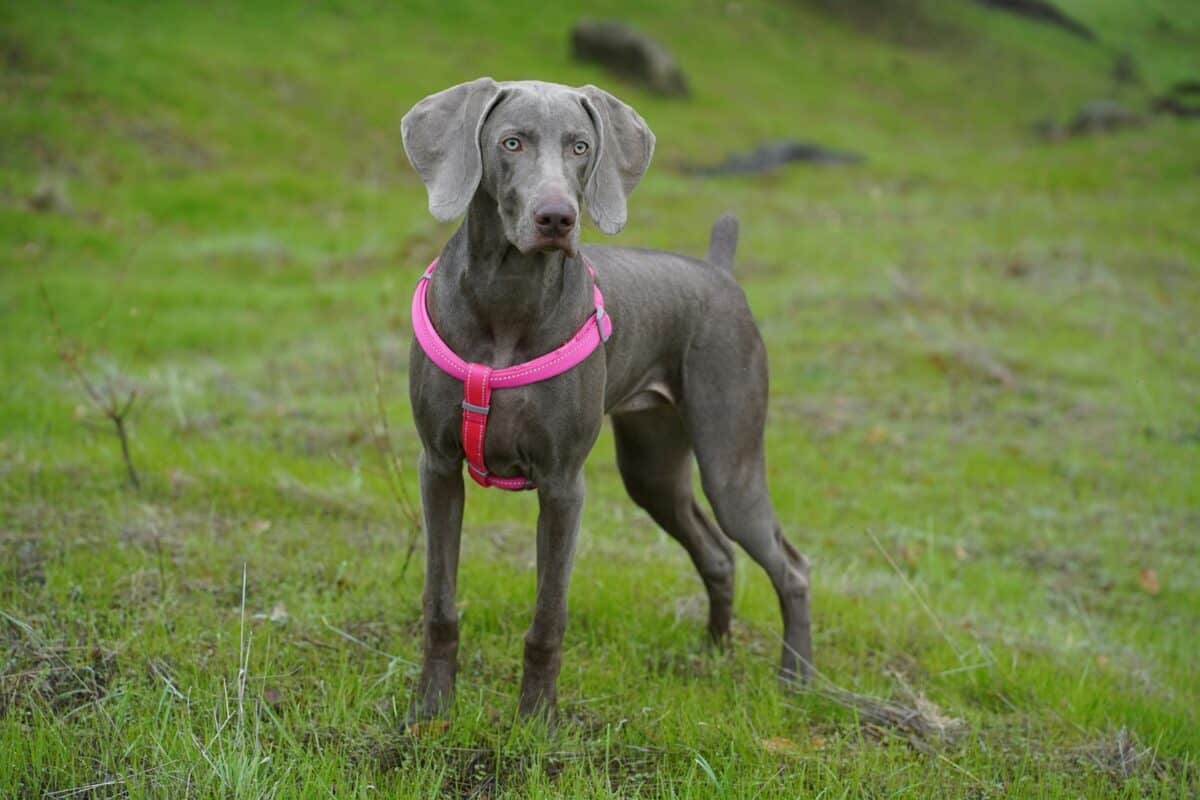
Weimaraners, often called “Gray Ghosts” for their distinctive silver-gray coats, possess hunting instincts and energy levels that can create challenging dynamics in families with young children. Originally bred as hunting dogs in Germany, modern Weimaraners retain their ancestral stamina, requiring substantial daily exercise – often 1-2 hours of vigorous activity. Without adequate physical and mental stimulation, these intelligent, high-drive dogs frequently develop destructive behaviors and anxiety. Their size (typically 55-90 pounds) combined with boundless energy means they can easily knock over small children during play or excited moments, even without any aggressive intent.
Their hunting background also contributes to a strong prey drive that may cause them to chase running children or view smaller pets as potential quarry. Weimaraners form intense bonds with their families and can develop separation anxiety that manifests in destructive ways when left alone. While older, dog-savvy children who can participate in exercise and training can develop wonderful relationships with Weimaraners, households with toddlers or very young children often struggle to provide the structure, exercise, and supervision these dogs require. The combination of their physical power, intelligence, and exercise needs generally makes them better suited for active families with older children or athletic adults.
Shiba Inu Independent and Strong-Willed

Shiba Inus have surged in popularity due to their fox-like appearance and internet meme status, but their independent, sometimes stubborn temperament presents challenges in homes with children. Originally bred in Japan for hunting, modern Shibas retain a strong prey drive and a fiercely independent nature that can manifest as resource guarding – defending food, toys, or resting spaces. Unlike breeds that naturally seek to please their humans, Shibas often operate on their own agenda and can be resistant to commands, especially if they see no benefit to compliance. This independent streak can create friction in situations where children need to handle the dog or retrieve items from them.
Shibas are known for their cleanliness and cat-like behaviors, often preferring to maintain personal space and approach for affection on their terms. They typically dislike being hugged, restrained, or handled extensively – exactly the types of interaction many children naturally attempt with dogs. When uncomfortable, Shibas may give subtle warnings before resorting to more obvious signals like growling or snapping. Their natural alertness and territorial tendencies also mean they may bark at or be suspicious of children’s friends entering the home. While well-socialized Shibas can adapt to respectful older children, their independent nature and personal boundaries generally make them better companions for adults or families with mature children who understand canine body language.
Caucasian Shepherd Gentle Giants with Protective Instincts

Caucasian Shepherd Dogs, also known as Caucasian Ovcharkas, present significant challenges in family environments due to their immense size and powerful protective instincts. Originally bred to guard livestock against predators including wolves and bears in the Caucasus Mountains, these dogs typically weigh between 100-170 pounds and stand up to 30 inches tall at the shoulder. Their sheer physical presence means even friendly interactions can be dangerous for children – an excited Caucasian Shepherd can easily knock down or injure a child without any aggressive intent simply due to their size and strength.
More concerning than their size is their natural guardian temperament. Caucasian Shepherds are intensely protective of their families and territory, with strong instincts to defend against perceived threats. They often view unfamiliar people, including children’s friends, as potential intruders. Without extensive socialization and training by experienced owners, these dogs can become overly suspicious or aggressive toward visitors. Their protective nature, combined with an independent decision-making ability bred into them for livestock guardian work, means they may act autonomously to “protect” the family from what they perceive as dangers. While deeply loyal to their families, their combination of size, strength, and protective instincts makes them generally unsuitable for households with children or frequent visitors.
Afghan Hound Elegant but Easily Startled
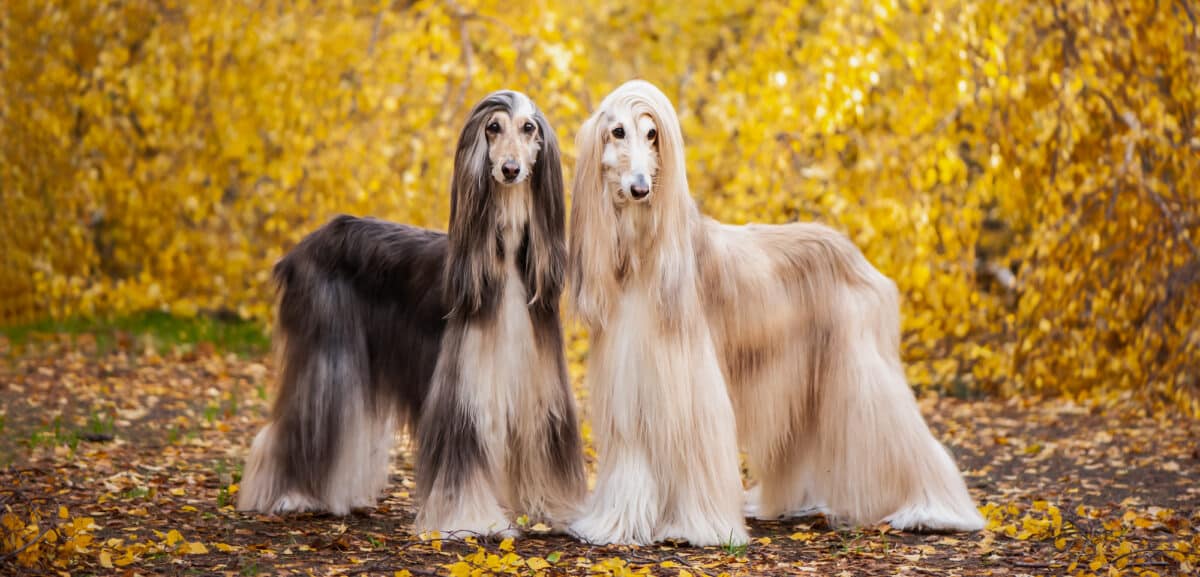
Afghan Hounds, with their flowing coats and regal bearing, possess a combination of physical and temperamental traits that create challenges in homes with children. Their stunning appearance comes with considerable maintenance requirements – their long, silky coat needs daily brushing and regular bathing to prevent matting and tangles. Children often lack the patience and gentle touch needed for this grooming routine, and many Afghans dislike extensive handling. Their slender build, while elegant, is also more susceptible to injury than sturdier breeds, especially during rough play or if small children attempt to climb on them.
Beyond physical considerations, Afghan Hounds typically possess independent, somewhat aloof temperaments that don’t align well with children’s desire for interactive play and affection. Originally bred as hunting dogs in Afghanistan, they retain a strong prey drive that may cause them to chase running children or smaller pets. Their sensitive nature means they often react poorly to loud noises, sudden movements, or rough handling – all common in households with young children. While they can form loving bonds with their families, Afghans generally prefer quiet admiration to boisterous play or cuddling. Their combination of high maintenance needs, independent nature, and sensitivity to stimulation makes them better suited for adult households or families with older, calm children who can respect their space and unique needs.
Safe Alternatives Family-Friendly Dog Breeds

For families seeking canine companions that typically thrive with children, several breeds stand out for their patience, sturdiness, and friendly dispositions. Labrador and Golden Retrievers consistently rank among the top family dogs due to their gentle mouths, playful but controlled energy levels, and natural affinity for children. Their sturdy builds can withstand some roughhousing, though children should always be taught to respect animals. Beagles, with their happy-go-lucky attitudes and medium size, often make excellent family companions, combining playfulness with a generally tolerant disposition toward children’s antics.
Other family-friendly options include the Cavalier King Charles Spaniel, which combines a small size with a remarkably patient temperament, and the Boxer, whose protective instincts are balanced with playfulness and a love of family activities. Regardless of breed, successful integration of any dog into a family with children requires proper training (for both the dog and children), consistent supervision, and respect for the dog’s boundaries. Parents should teach children appropriate ways to interact with dogs, including recognizing signs of discomfort or stress. Remember that even the most family-friendly breeds need rules, boundaries, and respect to thrive in households with children.
Conclusion: Finding the Right Match for Your Family
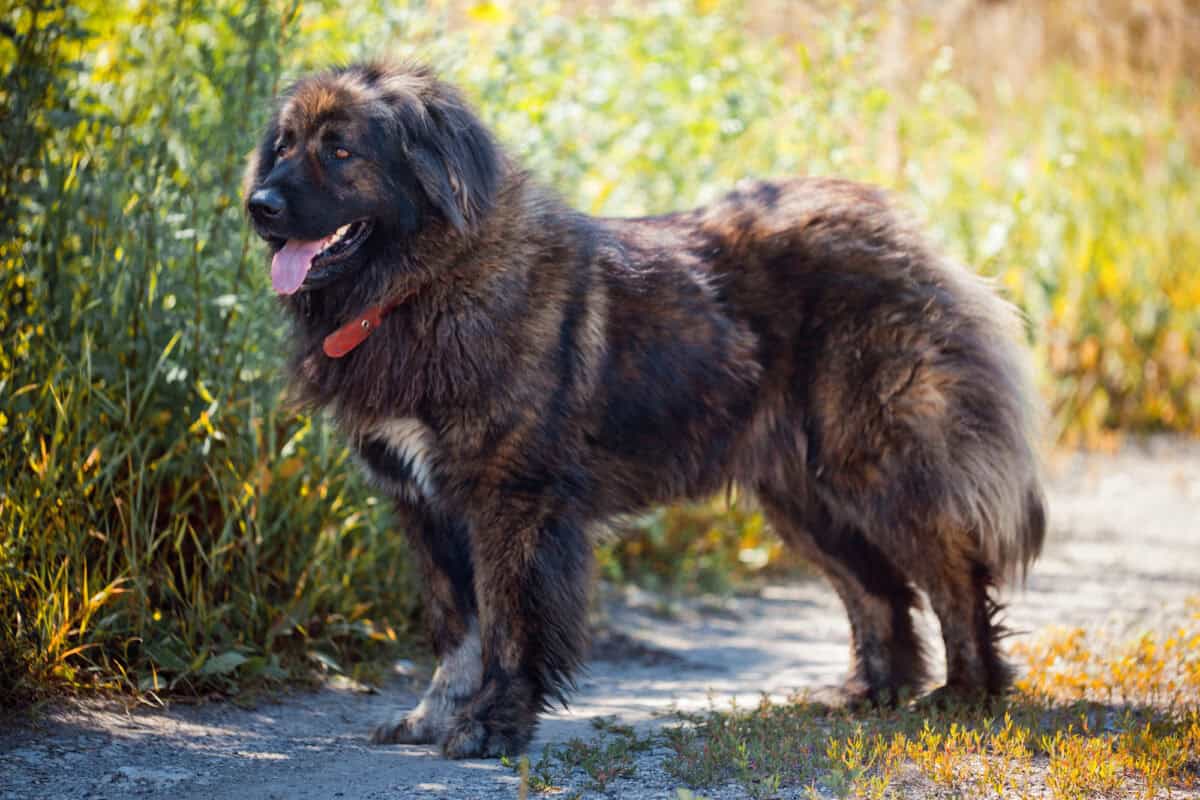
Selecting a dog that will harmonize with your family dynamics, especially when children are involved, requires careful consideration beyond just appearance or popularity. The breeds discussed in this article – from the physically fragile Chihuahua and Italian Greyhound to the powerful, protective Akita and Caucasian Shepherd – present specific challenges that may make them poor matches for households with young children. However, it’s essential to remember that individual dogs within any breed may defy stereotypes, and proper training, socialization, and management can sometimes overcome breed tendencies.
When choosing a family dog, consider not only the current ages of your children but how your family situation might evolve over the dog’s lifetime, which could span 10-15 years. Consult with reputable breeders, rescue organizations, and veterinarians who can provide insight into specific breeds and individual dogs. Consider fostering before permanent adoption to test compatibility, and be honest about your family’s lifestyle, activity level, and ability to meet a particular dog’s needs.
The most successful family-dog relationships occur when there’s alignment between the dog’s natural temperament and the family environment. While this article highlights breeds that often struggle in homes with children, countless wonderful dogs – both purebred and mixed – thrive in family settings when properly matched, trained, and respected. By making an informed, thoughtful choice based on temperament and needs rather than appearance alone, families can find canine companions that bring joy, learning opportunities, and unconditional love to children’s lives for many years to come.
- 10 Dog Breeds That Are Too Fragile or Fiery for Families With Kids - August 10, 2025
- 13 Venomous Creatures You Will Want to Avoid - August 9, 2025
- Top 12 Most Affectionate Dog Breeds to Own in America - August 9, 2025

